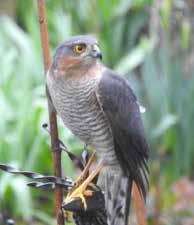














Who remembers the very first record they bought?
Was it an LP or a single?

Did you have your own record player, or did you have to share the family one? Why am I asking these questions?
Well…20th April is “Record Store Day”, a day dedicated to independent record shops across the world.
The event began in the US in 2007 with the first official “day” being 19th April 2008. Today thousands of record shops all over the world use “Record Store Day” to celebrate the role they play in bringing music to the masses. Here in the UK at least 260 stores take part every year.
As a child of the 70s, vinyl records were a big part of my life – it helped that one of my aunties actually worked in a record store, meaning I had access to the latest releases at discount prices!
I had a blue “Dansette” record player in my tiny bedroom, and I would spend ages up there listening to my favourite LPs, singing along and trying to dance in the miniscule amount of space ‘twixt bed and wardrobe’.
As time went by the old record player was replaced, first by a “boombox” style radio cassette player (and there hangs another story concerning cassette tapes and pencils…if you know, you know!), and then eventually by a CD player.
But I never forgot the joy of taking a shiny black LP out of the white dust cover. Of reading the song lyrics, revelling in the artwork on the album cover, then carefully replacing the LP in its protective
paper cover and sliding it into the cardboard album. Somehow the tiny cassette and CD packages never had quite the same impact – and the plastic! Wow, all those CD cases that cracked and fell apart – card album covers never did that. We were sustainable in the 70s and 80s – even if we didn’t know it.
So…circling back to the beginning of this article – the first record I bought for myself with my own pocket money was “David Essex”. The second album by him, released in 1974. Even at 11 years old, his blue eyes bedazzled me.
A staggering 50 years have elapsed since that purchase, tastes in music – both mine and in general – have changed, and not always for the better <grin>. But what is remarkable is that vinyl records have survived the onslaught of cassettes, CDs, and digital downloads, and are revered by musical purists as the best way to listen to music. I’m not sure about that, but vinyl LPs are certainly more of an overall sensory experience than streaming!
And finally – if you want to be a part of Record Store Day, there are three record stores in Sheffield, one in Chesterfield, and one in Nottingham, listed on https://www.recordstoreday.co.uk/ Why not pay one of them a visit and support them?














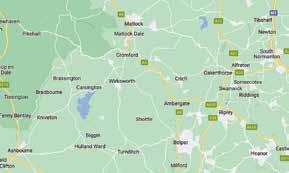





Forlornly wandering around Paris after her husband as he pursues his interest in puppet theatres, Marianne is struck by the unfairness of his accusation that she can be a bloody difficult person to like.
She reckons she has done her best. She married said husband - her best childhood friend Hugo - and has tried to give them a good life. Then it strikes her that “her best” has left her like a sick grey parrot in a cage, in the wrong place at the wrong time and with the wrong people.
Absolutely and Forever by Rose Tremain is the story of a naïve and innocent girl who as a teenager falls headlong in love with a perfect human being – not the man who ends up as her husband needless to sayand spends most of her life lost to an imagined perfect life with the perfect man.
She’s very much the product of her middle class suburban 1960s-70s upbringing, although the swinging sophistication and early feminism of the period seems to be in a different world. At one point she sees herself turning into her mother. The descriptions of her parents’ world are really entertaining in a wince kind of way.
Marianne is infuriatingly uncertain of herself, but also someone you want to hug even while she’s driving you mad. It’s a story of a young love which can only go wrong in the real world but it’s also funny and astute and subtle and pokes gentle fun at the times it is set in. The writing fizzes along and it’s an interesting take on how we get trapped in our lives by the things around us, and by our own perceptions. A perfect little gem.




Both my mum and my granny had big tins which contained a wide variety of “bits and bobs” and sewing accoutrements: treasure trove to a small girl. In my mum’s case it was a large old Quality Street tin with a tight-fitting lid which was kept in the “glory hole” or under-stairs cupboard – a semi-lit cave filled with fragrances of shoe polish and dust. When she needed something from it, she would call out, “Janny, fetch “The Tin” for me” and I would gladly collect it from its designated place in the glory hole.
As well as her sewing and button collection, it held a single sock with a hole in the toe. We never had a proper darning mushroom; mum used an orange instead. But she did have several cardboard rectangles with different colours of wool wound round for mending woollen clothes.
Some of the more unusual objects which found themselves consigned to “The Tin” were a metal whistle, a single fuse, odd keys, an Edwardian button hook, lengths of string, a kilt pin, hair grips, a plastic fork for eating dates at Christmas and fairy light bulbs. There were also many unidentifiable objects or parts of things which went to live in the tin until they were reunited with the missing bit.



Some of these had been in “The Tin” for so long that their original use had been long forgotten but their place was assured for all time because they “might come in handy one day”. The sewing items were most often used and were stored in a separate box within “The Tin” except for the pin cushion which remained the vibrant and prickly star of “The Tin”. The first thing that greeted you as the lid was eased off like a bejewelled hedgehog.



I have gathered together a bits and bobs basket for our reminiscence sessions containing many of the remembered items from my childhood. People love to rifle through it and rediscover long lost memories. Did you have a bits and bobs tin, box, drawer or basket?
Janet and Paul Barrass are All Around the Shire. Find us on or email: oldfield512@btinternet.com for more information.



There is always great excitement among the RASCALS Lifesavers when the competition calendar officially kicks off in January. This year was no exception when 27 of our Lifesavers competed in the “Youth, Seniors & Masters Stillwaters” at the Welsh National Pool Swansea. This would be the first opportunity for those experienced lifesavers considering declaring their availability for the GBR squad, to bank some good times and hopefully impress the selectors. It was also an opportunity for our up-and-coming superstars to compete in the full manikin events for the first time, and for others to improve their personal best times (PB’s).
Harriet Moores, one of our youngest swimmers in the Youth 13 age group, stormed to victory with silver and gold medals in her manikin events. The strength in our Youth 15 boys’ squad was evident as Tobi Watson, Harry Pollicott and Riley Baxter dominated their individual events claiming 3 Gold, 2 Silver and 2 Bronze medals between them. Elena Quinn, Youth 15, always a force to be reckoned with, claimed Gold in the Rescue Medley and Silvers in both manikin events. Mimi Fisher, now in the Youth 17 age group, was in top form, winning medals in all her events including Gold in 100 Carry with fins. Mimi was also the highest points scorer on the RASCALS squad!! Cillian Lamont, among the youngest in the Youth 17 age group, took Bronze in the Rescue Medley with the notorious 17.5m underwater swim.
Seasoned GBR competitors, Heather Watson, Luke Waterfall and Freddie Postlethwaite, all moved up to the senior category but all secured top 10 finishes including gold and silver medals for Heather, and two bronze medals for Luke. In the Masters section, Terry Fox dominated his age group, unbeatable in his individual events. Rachael Healy put in a powerful performance to claim Silver in her Manikin Tow race.
Other RASCALS athletes with individual Top 10 finishes were Sophia Froggatt, Sophie Hodgkinson, Aydrian Cope, Grace Clark, Emily Hodgkinson, Ella Brough, Keiran McLoughlin, Jacob Screeton and Jack Lester.
With so many impressive Lifesavers on the squad, the combination of talent secured an impressive haul of 6 Gold, 3 Silver, and 5 Bronze medals in the exciting line throw and relay events.
Relay events are a particular crowd pleaser – spectators are always on their feet with the lead changing numerous times within the race. In the Mixed Lifesaver relay, the combination of Mimi Fisher, Freddie Postlethwaite, Luke Waterfall and Heather Watson gave an outstanding performance to take Gold, setting a new RASCALS record time that was only a fraction off a GB record. Impressive!
Not to be outdone, impressive swims by Jacob Screeton, Jack Lester and Freddie Postlethwaite took the senior boys Medley

relay team within meters of the lead. With a seamless, textbook changeover, Luke Waterfall battled that final leg towing Freddie, kicking furiously, taking the race to the final touch- Gold by 0.48 of a second!! It was the first time RASCALS have won this relay event and a very proud moment for Head Coach Daniel Woodthorpe. Such was the synergy showcased by both relay teams, that impressively, on the day, both teams clinched World Games qualifying times !!”
Overall, RASCALS finished 2nd out of 20 UK lifesaving clubs –a brilliant weekend for athletes, coaching staff and supporters alike.
If you would like to expand your swimming activities or try something new, please contact us. contact@ripleyrascals.org.uk
•
www.ripleyrascals.org.uk












All our BRITISH MADE sofas, chairs & recliners are made to order and normally delivered within 6-8 weeks. Choose from over 2000 fabrics and leathers. Only 100% genuine leather used on all our Italian suites, which are made to order in any colour and normally delivered within 8 - 10 weeks Reupholstery, repairs & cushion replacement service available - call for appointment Tel:
adjustable beds available along with divans and headboards in ALL sizes Full range of mattresses inc. orthopaedic, pocket sprung, memory foam, etc in ALL sizes


























Method:
1. Put the chicken in a ceramic bowl and sprinkle over the soy sauce. Toss well to coat.
2. Cook the rice according to the pack instructions, then drain well and keep warm.
3. At the same time, spray a non-stick wok or large frying pan with low-calorie cooking spray and put it over a high heat. Add the chicken strips and stir-fry for 2-3 minutes, or until browned.





I love Japanese food, so When I saw this recipe I thought, we have to include it. Quick and easy to make. Filling and full of flavour. This recipe ticks all the boxes.
4. Add the vegetables and stir-fry for 4-5 minutes.
5. Pour in the teriyaki sauce and stock and stir-fry for 4-5 minutes, or until piping hot and bubbling.
6. Divide the rice and chicken mixture between 4 bowls, and sprinkle over the shredded seaweed, if using, to serve.

Ingredients:
• 3 large skinless and boneless chicken breasts, cut into strips

• 4 tbsp dark soy sauce
• 250g dried long-grain white rice
• Low-calorie cooking spray
• 2 carrots, cut into matchsticks
• 1 red pepper, deseeded and cut into thin strips
• 100g mangetout
• 150g shiitake mushrooms, stalks removed, very thinly sliced
• 3 level tbsp teriyaki sauce
• 100ml hot chicken stock
• 1 dried seaweed sheet (nori), shredded (optional)

Stained glass conservation refers to the protection and conservation of glass for future generations. It involves any and all actions devoted to the prevention, mitigation or reversal of the processes of deterioration that affect such glassworks and subsequently inhibit individuals’ ability to access and appreciate them, as part of the world’s collective cultural heritage.
The fabric of the glass itself, the paint or stain used to decorate it, and even the metal framework and/or the stone used to hold the design together are all at risk of deterioration, and will likely require conservation work to ensure their long-term survival. Stained glass is subject to damage caused by a number of factors including exposure to pollution, weathering etc. as well as the innate fragility of glass and any potential chemical instability of the materials involved (Brown et al. 2002, xi; Rauch 2004). Other aspects include extreme weather, improper handling or indeed deliberate damage.(Vogel et al. 2007).
The vast majority of stained glass was originally created to function as part of the building envelope, enabling local communities to understand stories associated with religion or other commemorative matters. As a result, most historic glazing that has been left in situ is subjected to a constant onslaught of harmful conditions including (but not limited to): UV light from sunlight, extreme weather conditions, indoor and outdoor manmade pollution, and biological damage caused by pests such as pigeons, bats, and various microorganisms (Rauch 2004, 3).
Historic glass can deteriorate through other issues such as chemical stability resistance to natural deterioration, impurities, and variations in glass composition can cause further destructive processes to enact. Over time, pitting of the glass can worsen until the glass becomes almost opaque.
Other defects can start to occur: the breakdown of the paints, enamels or stains used to create the effects. In some case structural deformation and deterioration can happen where the stone, metal strips become bowed to the extent glass is no longer held in place and weather can accelerate the demise

Restoration can take a number of forms: Simple cleaning is effective but care of the surfaces must be considered. Carefully applied deionized water is one option, taking care not to remove any loose paint. Even this process should be consulted with the relevant authorities and conservation bodies to ensure damage isn’t done.
Repairs are meant to last but with the glazing best practice should be sought. In the context of stained glass, repairs can involve treatment of the glass itself, treatment of missing areas, or structural consolidation of the panel or surrounding architectural stonework.
Missing areas or broken areas can be filled or replaced but should be done so with caution.
Protective glazing – almost a sandwich of glazing that allows good air flow but has to be professionally created so not to act as a measure that works against the conservation of the glass itself.
Final word: if in any doubt seek professional advice from your local authority conservation officer, church authority or an architect.



Please get in touch if you have any community history projects in your area, we might be able to help! Contact Richard Godley on










✽ 2 spacious en-suite bedrooms
✽ A fully enclosed garden
✽ 2 small to medium dogs welcome (3 upon request)
✽ Fully equipped kitchen, including an American style fridge freezer


✽ Perfect for exploring the stunning Northumbrian Heritage Coastline
✽ Close to a range of dog friendly pubs, cafes and restaurants in stunning Warkworth
✽ We have fast fibre Wi-Fi and smart TV’s
Search ‘The Little Red Hen House’ at:

Treat yourself to a luxury break at the 4* Gold Award winning Little Red Hen House. An elegant and cosy holiday home just a 7 minute drive from award-winning and dog-friendly Warkworth beach. www.coquetcottages.co.uk


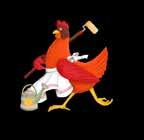







This fantastic walk originally came to us from Terry at Alfreton Ramblers Club and featured in the magazine nearly 10 years ago, so it’s definitely time for a rewalk! Having said that there were only a few small changes. Although this is a taxing walk with some steep climbs it is worth it for the amazing views. As well as the tricky uphill sections there are some stretches of road and some steppingstones to cross so please take care, especially with your dogs. Enjoy!

A difficult and varied walk for you and your dog. The route should take around 2 hours. There are a couple of difficult climbs and descents and a couple of stretches of road. The terrain is generally good but as with all walks if it will depend on the conditions. A good pair of boots is a must for the up/downhill sections.
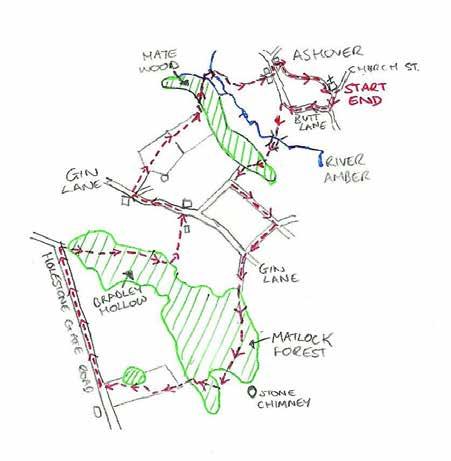

START: ALL SAINTS CHURCH, ASHOVER, ASHOVER CHURCH, 22 CHURCH ST, ASHOVER, DERBYSHIRE, S45 0AU,
1. Begin at All Saints Church, Ashover (there is ample parking nearby). With your back to the church head right down Church Street. At the junction turn right onto Butts Rd and continue for approx. 200 meters. After the road bends round to the right take a
footpath sign on your left. Follow the track across the River Amber and continue bear straight ahead uphill towards a signpost and then bear up and right to reach some steps that take you through the wooded area.


2. As you reach the top there is a lovely view of Ashover. Cross a stile over a wall of stone slabs, carry on up the next field to cross another stile. Turn left onto a track, which you will follow for 300 meters until you meet a crossroad. Turn right here and follow the track. Cross Gin Lane and carry on along the track as it takes you into Matlock Forest.
3. As you emerge from the wooded area take the path that leads diagonally uphill. As the path levels off and you see a stone chimney to your left take the path that leads diagonally right, steeply uphill and through a wooded area.
4. As you reach the top you meet a T-junction on the path. Turn right and very shortly take a left turn alongside a stone wall.
5. Cross a collapsed wall into a field and carry on ahead with the field border on your left. As you approach the wooded copse cross the field towards it and follow around the outside to meet the field border. Follow this down to the gate at the bottom.
6. Turn right onto Holestone Gate Road. There is no path so take care and make use of the grass verge on the left-hand side of the road. Carry on ahead for approximately half a mile and as the road bends round to the left take the footpath sign on your right.
7. Carry on ahead through the gaps beside the two gates and pick up the path as it leads ahead into a wooded area known as Bradley Hollow. As you exit the woods bear left along the path down through the field past the ruined building to cross a stile onto Gin Lane.

8. Turn left and carry on for just over 200 meters before taking a footpath marked stile opposite a farm. Walk on towards a the oppostie side of the field heading for a gate and pass into the field on your right. Carry on with the field border on your left.
9. At the top of the field cross the stile and make your way down to the bottom left corner of the next field to pass through a gap and follow the path with Hate Wood on your right. After about 70 meters take a stile on your right into the wood and go down the steps towards the river.
10. Take great care crossing the river via the steppingstones. Carry on with the fence on your right before taking a gate in the fence. Follow the path across a small bridge. Follow the path with the trees on your left then bear left diagonally uphill. You will see the church spire directly in front of you. Carry on, passing between the houses to reach Butts Road.
11. Cross the road and turn left before taking a signposted path on your right after a few meters. Follow this path as it takes you round the back of the school and the church yard to bring you out onto Church Street. Turn left to head back to where you began the walk.



purposes only. Voice Magazines Ltd takes no responsibility for anyone who chooses to follow this route and encourages all walkers to obey all byelaws and signs and to respect the area they are walking in, ensuring they pick up all dog mess and obey the countryside code at all times.


Maintenance free Timber Alter native Windows & Doors from Evolution. With all the beauty of traditional timber, our wood effect windows and doors have to be seen to be believed.


Maintenance free Timber Alternative Sash Windows from the Bygone Collection. The most energy efficient, authentic, timber alternative sash window on the market. Exceptional build quality, with an unprecedented 12 year guarantee.








manufactures iconic steel replica, heritage, Art-Deco or industrial-styled glazing solutions. Aluco delivers expertly crafted, cleverly designed, and above all, authentic in






































(no – not that kind of double D!) “Daisy, Daisy, give me your answer do.”
No, I’m not going mad (that happened ages ago), daisy is actually the flower of the month of April!
There’s something quite fresh and almost naïve about a daisy, at least the type of daisy that immediately springs to mind…it doesn’t pretend to be anything glamorous, you can’t pick a bunch and stick them in a vase – well you could, but it would have to be a very small one. They are simple; white petals, yellow centre, and they love to peek out of our lawns – a very welcome sign that spring has sprung…although many a lawn purists may disagree.
Daisies are common and inexpensive (sometimes unwanted) flowers.
Diamonds, on the other hand, are relatively rare, and ridiculously expensive bits of pressure cooked carbon!
Of course, there are other varieties of daisy other than the humble lawn one (Bellis Perennis) – in fact there are apparently over 20,000 different kinds, spread across the globe. These include artichokes, calendula (pot marigold), chamomile, echinacea, oxeye daisy, Michaelmas daisy and sunflower. So, not as simple a flower as one may at first think.
I came across this snippet of a poem which, for me, neatly encapsulates how I feel about daisies: ‘The daisy is a happy flower, And comes at early spring, And brings with it the sunny hour, When bees are on the wing.’ – John Clare, “The Daisy”. If every month of the year has a flower associated with it, it stands to reason that other “stuff” is also linked to months…things like gemstones, for example.
April sticks with the initial “D” for its associated stone…diamond.
Daisies and diamonds – polar opposites, really.
They (diamonds, that is) were formed long before dinosaurs roamed the Earth; the “youngest” diamond is nearly a billion years old, and they are the hardest natural substance known to man. The hardness of the stone makes it really difficult to cut and polish, and yet, if you have ever seen a “raw, uncut” diamond, you will see why, for thousands of years, jewellers have attempted to do so. For a raw diamond, whilst still pretty, is not particularly sparkly – to me, they look more like chunks of ice.
It’s the facets and angles of a cut and polished diamond that cause it to reflect and refract light, and therefore appear to glitter, making them a sought after stone for those who enjoy a bit of bling. And of course, they are often the stone of choice for engagement rings…
Which brings us neatly back to my opening line – there is always a method in my madness, you know! As the verse goes on to say, “it won’t be a stylish marriage, I can’t afford a carriage”, I think it’s safe to say that poor old Daisy didn’t receive a diamond ring as part of her proposal.
Oh well – diamonds may last forever, but lawn daisies are perennial…same kind of idea, isn’t it?!










It is rare to find Victorian accounts of working people’s lives written in their own words. Thomas Dring’s “A Struggle Through Life” is one such rarity. Born in Leicestershire in 1857, his family moved to Codnor when he was 8, and he began work immediately at Waingroves Pit, at a wage of one shilling per day for a twelve-hour shift. After a spell on a farm in Staffordshire, the family moved back to Codnor, and Thomas returned to work in a pit. At the age of 12, he ran away from home but was quickly apprehended and sent back to work. At 21, at the Pear Tree Inn in Ripley, he enlisted in the army. His regiment received their colours from Queen Victoria in Windsor, and in 1879 were sent to South Africa.
He fought in the Zulu War and survived. During one march through South Africa, he remembered seeing a large

iron bridge marked with the words ‘Butterley Company, Ripley’. He left South Africa for India and stayed there for 4 years before returning to England and civilian life in 1884. Once more, he returned to working in the pit. He married in 1886, and the family moved briefly to the North-East before returning to Codnor. They had nine children, but only 6 survived into adulthood.
In 1900, he was called up into the army for the Boer War, but this time didn’t leave the country. In later life, he lost his sight, but still lived to the age of 84. By then, he was living in Heanor and was the town’s ‘oldest soldiers’ resident’. His life was, no doubt, a “struggle,” but in recording it, he
gave us a valuable insight into the past, thanks to his greatgrandson Stephen Morse who preserved the account.

























Pitcherwits® are crossword puzzles where some of the clues are in pictures.
Sound easy? It’s not called “Pit-your-wits” for nothing!
The mixture of cryptic and picture clues, combined with Professor Rebus’ unique sense of humour, will keep you entertained for hours.

Across
1 Ill-fated plan to go to war in a states copcar (6,5)
5 Siân, having an ego that could cause such pains! (7)
14 See arms as about to embrace an old Egyptian (7)
16 Vat, with ‘ant’ label, cracked in sea struggle (5,6)



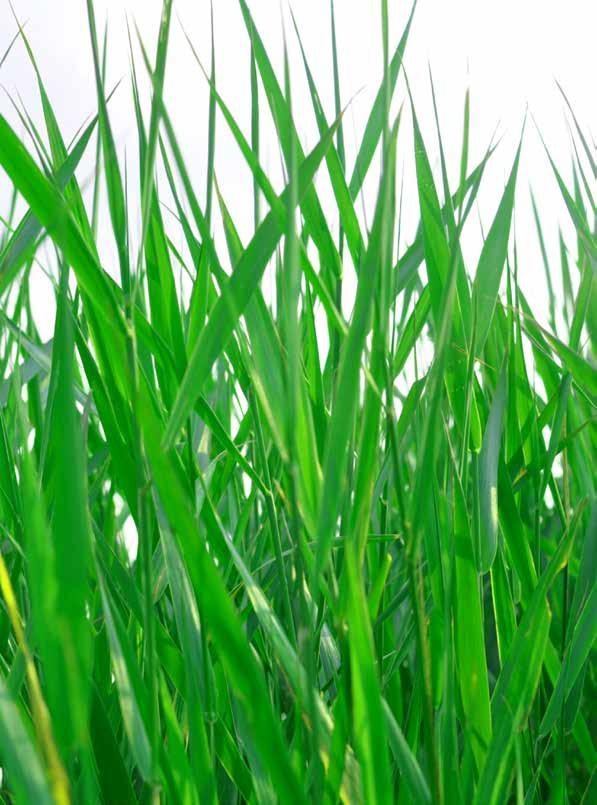
Across
9 Leave out no mitigating circumstances, however small (4)
10 Grid, about to encircle (4)
11 Back to lady’s alternative (5)
12 An ocular sort of flower for Murdoch? (4)
13 Approached with inner pain (4)
Down
2 Tell you later which tab to use (1,1,1)
3 Andre Agassi to have his own cooker (3)
7 Absent on three separate occasions (3,4)
14 Vicar, mentioned briefly in the Book of Revelations (3)
Down
1 Pops in to Rio to make a suggestion (11)
4 He’d a venison sandwich that just isn’t sticky! (3-8)
6 A stooge who intended to join the Navy (2,2,3)
8 Avenger’s plan to carve in script (7)




Down: 1 Beachcomb, 2 Elegies, 3 Ash, 4 Ski, 6 Pay rise, 7 Tea, 8 Capturing, 10 Whippet, 13 Mac, 16 Use, 17 Lah.
Across: 1 Blue whales, 5 Emphatic, 9 Crag, 10 Wasp, 11 Earth, 12 Ohms, 14 Pier, 15 Buckle up, 18 Enchanting.
15 ‘Tis complicated, so park yourself (3) ANSWERS FOR LAST MONTHS PITHERWITS
These puzzles are devised by the brilliant Professor Rebus. For more of his puzzles visit www.pitcherwits.co.uk

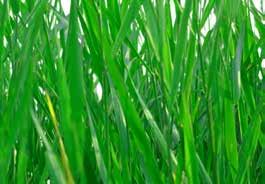

















Save £££ on electricity by upgrading your air compressor
Let our team know that you heard about us in THE VOICE when you book for your chance to WIN one of 10 ANNUAL DOMESTIC SERVICES
- excl. parts & tanker, terms and conditions apply, valid until end DEC 2024
The MPC Services team are here to help make sure that your sewage system is working well, properly maintained, up to date with the latest compliance regulations, working quietly and energy efficient. *Energy saving based on simply changing your traditional 85W air blower for a modern efficient FujiMAC 47W Japanese one, with electricity at 55p/kWh, for no loss of performance. Additional efficiency savings are typically possible.
Ask us about:
Annual maintenance, call-outs or repairs
Tank emptying
Any bad smells, noises or other sewage issues
Proper ty transactions & compliance



Lawns appreciate a bit of love after the ravages of a wet winter. April is the best time to re-seed baldy bits if there’s a bit of warmth. Dig the patch over and add a bit of fresh soil if it’s looking tired.
Rake over and make sure the seed has proper contact with the soil, plant about an inch deep if you can and tread in. Even if you’re just seeding over existing lawn make sure the seed is well trodden in. Water. If you’ve got uneven hollows or ridges just carefully peel back the top layer of turf and either remove or add soil and replace the turf, treading it down firmly. If you don’t like moss in your lawn or your grass is looking a bit ragged use a wire rake to pull out the debris – it will look a bit messy for a while but will repay the effort.
When using your glorious home-made compost to reinforce border soil be careful how you lift it from the compost heap or bin. Most hibernating creatures such as hedgehogs should be gone by now but it’s best to avoid attacking the compost pile with long tined forks or sharp spades, just in case.
Deadhead your daffs but leave the foliage to die down neatly and don’t tie. That way the energy will go back into the bulb and give you a good show net spring.
For a cottage garden look scatter the kind of seeds which used to grow in cornfields before intensive farming got to them. The likes of cornflower and poppies will give you a quick blast of colour and are great tor encouraging early pollinating insects.
The chlorine in the tap water most of us use for watering houseplants can actually harm growth. But if you leave it standing in an open jug for 24 hours a lot of the chlorine will dissipate. If you’ve got acid loving houseplants, use rainwater. Top Tip:

Whilst there are clearly still problems for birds of prey in and around the Peak District and North Derbyshire, recent decades have witnessed some spectacular recoveries such as by common buzzard especially, and but more localised, red kite too. Peregrines are doing well in urban areas where they nest on tall buildings and consume feral pigeons, but they still suffer persecution and disturbance in the Peak itself. There are other similar stories but that is maybe for another occasion. However, two of our more familiar birds of prey are a falcon, the kestrel, and a hawk, the sparrowhawk, and their recent histories are a little different. The kestrel was almost the only bird of prey that was still fairly abundant in the 1970s, whereas I now recall my first local sparrowhawk viewing as a ‘redletter day’! The bird, a female, was high over the Rivelin Valley on the eastern edge of the Peak District moors. The characteristic rounded wings, long tail, and the ‘flapflap-glide’ flight were very obvious. Kestrel on the other hand was a fairly common sighting that we expected on any outing to suitable habitat, and of course which thrived along the grassy verges of motorways and dual carriageways where they fed on abundant voles and mice. Unlike other birds of prey, kestrels escaped the worst of pesticides and also of persecution.
However, whilst kestrels thrived along their newly-created motorway habitats, the sparrowhawks were pretty much under the cosh and numbers plummeted, until perhaps the early 1980s. Regulation of both pesticides and (by now illegal) persecution meant sparrowhawk numbers started to increase. Other birds of prey, especially common buzzard also began a dramatic increase in both

MALE SPARROWHAWKS
BY IAN ROTHERHAMnumbers and geographic spread, the latter connected to a decrease in gamekeeping across lowland England. It seems that an unexpected consequence of the rise of the buzzards has been their emergence as direct competitors for feeding habitats (such as the roadside verges) with their smaller cousins, the kestrels. Moreover, buzzards are quite territorial and can be aggressive on breeding sites and in feeding areas. The overall result does seem to be a decrease in kestrels and the rise of buzzards and kites along roadside grasslands. Nowadays, the sparrowhawks have really come good and in many areas are quite abundant. In gardens both in the countryside and around the urban fringe they are doing well and are apt to take up residence close to bird-feeders. Whilst the loss of your garden blue tits, great tits, siskins, and the like can be distressing to witness, it is part of nature’s great cycle of life and death. The idea of rewilding nature and the countryside hinges greatly on the re-establishment of what we call ‘trophic levels’, i.e., the feeding levels of one-time regionally extinct predator and prey interactions in the food-chains. This drama of rewilding is acted out in and around our gardens every day, and predators like the sparrowhawks are stunning birds, but they do have to eat! Furthermore, the predators take out numbers of young birds that would otherwise starve during the winter months, and balance is maintained.


